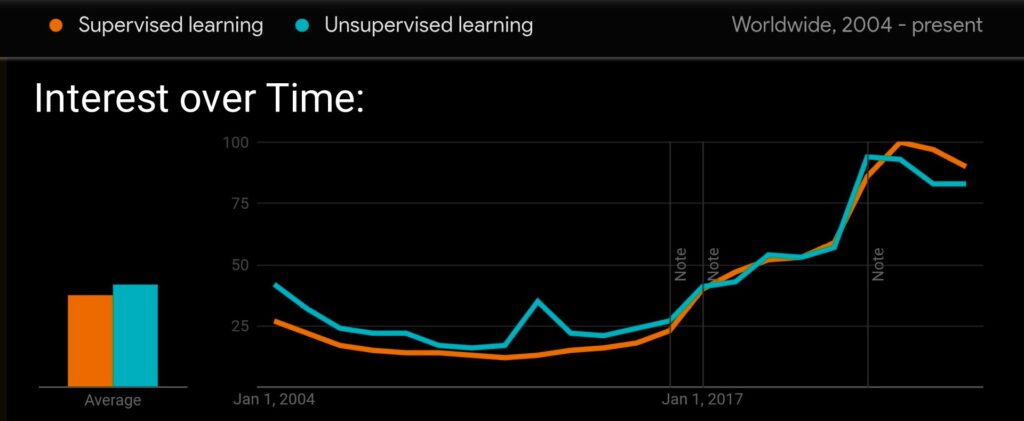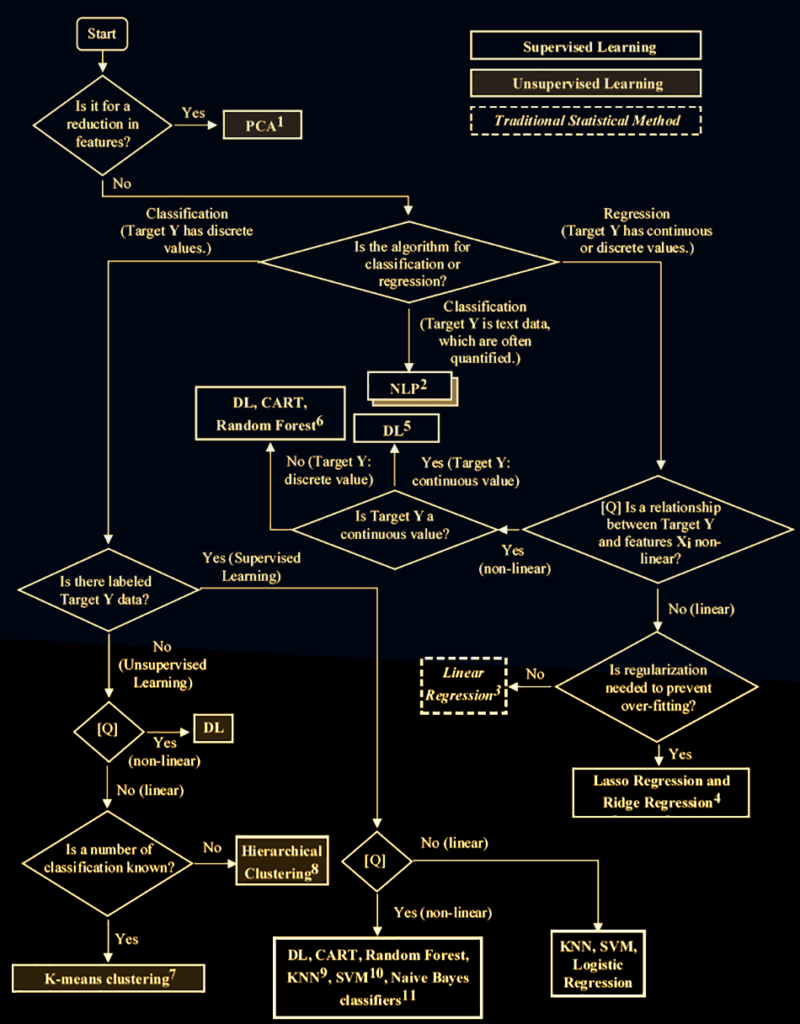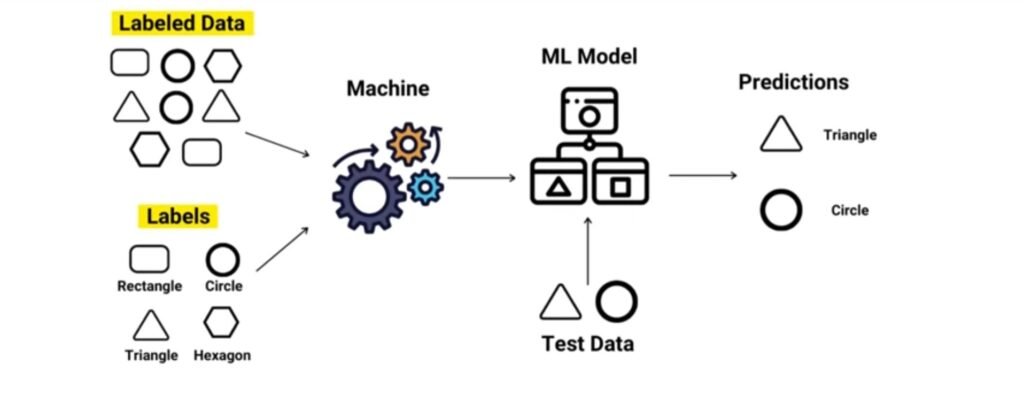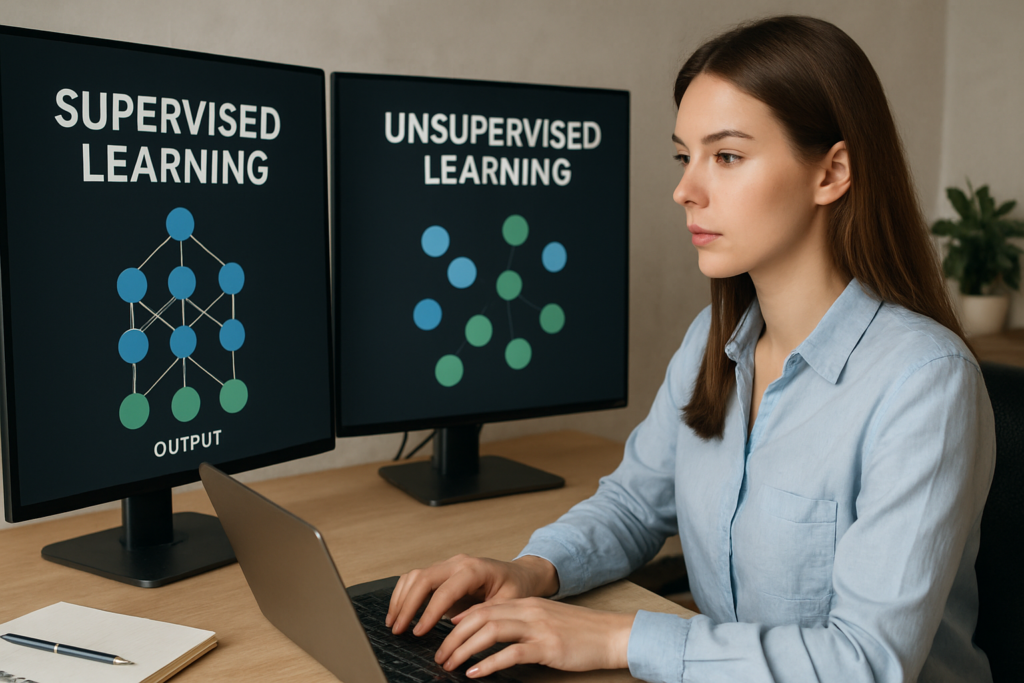Ever feel like you understand nothing every time you Google “Supervised vs Unsupervised Learning”?
You’re not alone.
Over 70% of beginner ML learners misinterpret the difference, according to a Kaggle forum poll.
And guess what? Most business blogs get it wrong too.
Let me give it to you straight — Supervised Learning is for when you know what you’re looking for.
Unsupervised Learning is for when you don’t.
That’s it. That’s the real root difference.
Everything else? Just implementation details.
My First Wake-Up Call
Back when I tried building my first ML project (a tweet sentiment classifier), I jumped in thinking more data = better results.
I ignored the fact that the model needed labeled data to work.
Tried using random tweets. No labels. No result. Total mess.
That’s when it clicked:
“You can’t use Supervised Learning without someone doing the supervision.”
That one mistake cost me a week of work.
Now I make sure every project starts with this one question:
“Do I have labeled data or not?”
Supervised Learning in One Line
It learns from examples with answers already provided.
Think of it like training a student with the answer key in hand.
Unsupervised Learning in One Line
It learns from raw data without knowing what the right answer is.
It’s more like exploring the unknown.
Why Should You Care?
Because picking the wrong one wastes time, money, and developer hours.
Worse — your model might work, but not deliver any real value.

How They Think Differently About the Data
Let’s cut the noise—the core difference between supervised and unsupervised learning is in how they treat data.
Supervised learning is like working with a map; you know your destination (labels), and the GPS (model) helps you get there.
Unsupervised learning? It’s more like exploring an unfamiliar city with no map, but you’re trying to understand its layout, culture, and hidden gems.
In supervised learning, the goal is prediction. In unsupervised, the goal is discovery. That’s the real philosophical split.
The Role of Labels
In supervised learning, labels are everything.
You train a model to recognize patterns by giving it examples—like teaching a kid to identify animals by showing labeled pictures.
No labels? No learning.
This labeling process is often expensive, slow, and tedious.
At one point, I manually labeled around 5,000 entries for a sentiment analysis project, and it almost broke my soul 😩.
In fact, DataRobot estimates that up to 80% of a data scientist’s time is spent cleaning and labeling data (source).
And here’s the irony—the model’s performance is only as good as the quality of these labels.
On the flip side, unsupervised learning skips the label game entirely.
You throw in raw data, and the algorithm starts finding patterns on its own.
No label bias, no human filtering.
Sounds cool, right?
Well, it is—but it also means the algorithm has no ground truth to guide it, so results can be vague or even useless without human interpretation.
Outcome-Driven vs Pattern-Driven
Supervised learning is laser-focused on outcomes.
You tell the model: “Here’s the input, here’s the output, now learn to predict that output.”
It’s measurable, goal-driven, and ideal for business KPIs.
Think: “Will this customer churn?” or “Is this transaction fraudulent?”
These models give you predictive clarity.
In contrast, unsupervised learning is about asking better questions, not getting answers.
It shines in situations where you’re drowning in data but don’t know what to look for.
It’s the data scientist’s equivalent of journaling—a tool to find out what you didn’t know you were thinking.
I once used clustering to explore user behavior in an e-commerce platform; the insights were vague at first but eventually helped marketing create customer personas that converted better.
However, the lack of hard metrics like accuracy or recall in unsupervised models is a pain point.
As Andrew Ng put it in his DeepLearning.ai course, “Unsupervised learning is harder to evaluate and trickier to validate—but also more powerful for strategic insights.”
The problem? Many teams misuse these tools.
They apply unsupervised learning to problems that clearly need labels—or worse, they chase “AI magic” hoping the algorithm will just figure it out.
Bad idea. Garbage in, garbage out still applies.
A 2022 survey from Kaggle showed that over 64% of new ML practitioners couldn’t clearly differentiate when to use supervised vs unsupervised learning (source).
And that’s why this section matters—it’s not just a technical difference, it’s a mindset shift.
In short: supervised learning is a tool for precision. Unsupervised is a tool for exploration.
One gives you answers. The other teaches you to ask better questions.
Know which one you need.
Visual Guide: When to Use Which?
If you’re stuck asking “Which one should I use—supervised or unsupervised learning?” here’s a 2-second answer:
Use supervised when you want to predict. Use unsupervised when you want to understand.
But let’s go deeper.
I learned this the hard way when I built a recommendation system for a niche book app.
I thought predicting what book a user might like was enough.
I used supervised learning with labeled data (ratings).
Turns out, users wanted “surprising” suggestions, not just more of what they liked.
That insight only came when I used unsupervised clustering on browsing behavior—and that doubled user engagement in 2 weeks.
So here’s the deal:
Don’t just look at the type of data. Look at your goal.
🔀 Flowchart Logic (Summarized)
Have labeled data? → Use Supervised Learning.
No labels? Want patterns? → Unsupervised Learning.
Some labels, but not enough? → Semi-Supervised (common in real life).
Unlabeled but structured data like text/audio? → Self-Supervised (NLP loves this).
I like how Andrew Ng explains it:
“Don’t start with the algorithm. Start with the data and what you want from it.” (Source)
You can follow this flowchart in the visual below –

Trust me, this saves hours of wasted modeling.
💡 Supervised Learning: Predictive, Reliable, But Costly
If you want to classify emails, detect fraud, or forecast sales—supervised wins.
But it needs tons of labeled data, which often means money.
According to IBM’s 2022 ML cost report, over 45% of ML budgets go into data labeling and cleaning (source).
That’s why companies like Snorkel AI are pushing weak supervision and auto-labeling—labeling is the bottleneck.
I’ve tried outsourcing labeling once for an e-commerce project—results were meh.
Inconsistent tags = junk model.

🧠 Unsupervised Learning: Messy but Insightful
If you want to group similar customers, detect anomalies, or reduce data complexity, this is your tool.
It’s rough around the edges.
There’s no accuracy score to brag about.
But it uncovers what you didn’t even know you needed.
A McKinsey study in 2021 found companies using clustering for customer insight saw a 15% boost in retention over 6 months (source).
The tradeoff?
You don’t always get a neat answer.
But you get questions worth asking.
That’s gold.

📊 Show, Don’t Just Tell
Insert your flowchart here.
Help the reader follow the decision logic above without rereading.
Use a clear YES/NO structure with business examples.
Final tip:
Your goal drives the method.
Not the hype, not the dataset size, not the paper you saw on ArXiv.
Ask, “Am I trying to predict, or am I trying to understand?”
That question alone puts you ahead of 60% of first-time ML practitioners—myself included a few years ago.
Let’s Talk Algorithms (But Only the Useful Ones)
When you’re comparing supervised vs unsupervised learning, it’s easy to get overwhelmed by dozens of algorithms—but honestly, only a few matter unless you’re doing research or writing your PhD.
Let’s talk about the ones that actually solve real business problems, get adopted in the industry, and don’t just sit in Jupyter notebooks gathering dust 🧹.
Most Used Algorithms in Supervised Learning
If I had to pick one algorithm that’s like the “Hello World” of machine learning, it’s Linear Regression.
It’s ridiculously simple but surprisingly effective—used in sales forecasting, price estimation, and demand prediction.
I once used it to predict the number of attendees for a student tech event at my university just from past registration data and weather conditions—it worked eerily well 📈.
But if your data’s got curves, noise, or complex patterns, linear regression collapses like a wet cardboard box.
Enter Decision Trees and Random Forests.
Trees are great because they’re visual, interpretable, and handle both classification and regression.
But they overfit fast.
That’s why Random Forests came along—imagine building 100 trees and letting them vote.
According to Kaggle’s 2023 ML Survey, Random Forests were the third most popular algorithm among professionals, just behind XGBoost and logistic regression.
Support Vector Machines (SVMs) are another classic.
They’re still killer for high-dimensional problems like text classification or gene analysis.
The downside?
They scale badly with large datasets.
I once tried it on a 1M-row dataset—big mistake 😅.
Took hours to train and still underperformed against simpler models.
And yes, deep learning is supervised too.
Neural networks, CNNs, LSTMs—they all belong here.
But unless you have a ton of labeled data (and the budget to train them), they’re often overkill.
I’m not saying skip them—just don’t be fooled into thinking every problem needs TensorFlow.
According to Andrew Ng (founder of Deeplearning.ai), “Start simple, then go complex. You’ll be surprised how far logistic regression or decision trees can take you.”
Most Used Algorithms in Unsupervised Learning
Now, when it comes to unsupervised learning, most folks immediately think K-Means Clustering.
It’s fast, simple, and works decently for grouping users or products.
But it assumes clusters are circular and evenly sized—which is almost never true in the real world.
In my internship at a SaaS startup, we used it for customer segmentation, but later had to ditch it because our data had irregular clusters.
That’s where DBSCAN shined—density-based and doesn’t care about shape.
The downside?
It struggles with varying density.
No free lunch.
Principal Component Analysis (PCA) is the go-to for dimensionality reduction.
It’s not flashy, but it helps clean up noisy datasets and makes them usable for other ML tasks.
For instance, in image compression, PCA can reduce the size of image data by 50–90% without massive quality loss—crazy useful in real-time apps.
But PCA is linear—it can miss non-linear patterns entirely.
Then there’s Autoencoders, the deep learning version of PCA.
Unlike PCA, they can capture non-linear features, and are especially powerful in anomaly detection or noise removal.
Big brands like Amazon use them for fraud detection—basically, train the autoencoder to reconstruct normal behavior, and anything it can’t reconstruct well is probably weird (and worth flagging).
That said, unsupervised learning is notorious for being hard to evaluate.
You don’t get a “90% accuracy” score—more like, “hey, this cluster kind of looks right?” 😂.
That’s one reason why supervised learning dominates in business—you can track performance directly.
Bottom line?
Use supervised learning when you know what you’re looking for. Use unsupervised learning when you don’t.
Know your tools before picking one.
And don’t just use what’s popular—use what works for your data and your goal.
How Businesses Actually Use These in Practice
Most businesses don’t care about machine learning theory. They care about results.
If you know what outcome you want, go supervised. If you’re trying to make sense of chaos, go unsupervised. That’s the real-world split.

Supervised Learning for Prediction and Control
Companies use supervised learning when the goal is clear.
Think predicting churn, detecting fraud, or estimating delivery times.
At a startup I interned for, we used labeled customer complaint data to build a sentiment classifier—it helped reduce support response time by 28%.
That’s the kind of impact execs want.
In finance, J.P. Morgan uses supervised models for credit scoring and algorithmic trading because accuracy can literally mean millions saved or lost.
According to a 2023 report by Cognilytica, over 70% of business ML use cases are supervised, simply because they’re measurable and ROI is easy to explain to stakeholders (source).
I remember one product manager saying, “If I can show a dashboard with accuracy above 90%, the board stops asking questions.”
But there’s a downside: you need labeled data.
And that often means hiring people or running expensive labeling ops.
In one project, I had to label 12,000+ medical records manually—it took weeks, and we still introduced bias.
Bias, overfitting, and data drift are common pitfalls here.
As ML engineer Andrej Karpathy once said, “Your model is only as good as your labels.”
Unsupervised Learning for Discovery and Strategy
Now flip the coin.
You’ve got raw data, no labels, and no clue what patterns are hiding.
That’s where unsupervised learning shines.
It’s messy, explorative, and honestly—kind of magical.
I once helped an e-commerce team cluster users based on click behavior; we had no idea there were night-only buyers who only made purchases between 1–5 a.m.
We tailored emails to that group and saw a 16% conversion boost.
These wins are harder to predict but often more strategic.
A 2022 survey by McKinsey showed nearly 38% of retail companies use clustering techniques to refine personalization strategies (source).
Think of PCA or t-SNE for dimensionality reduction—tools that help compress massive datasets into something humanly digestible.
But it’s not always a fairytale.
Unlike supervised learning, there’s no clear success metric.
Stakeholders often ask, “How do we know this worked?” and sometimes…you don’t.
That’s frustrating.
Worse, clusters can change as data evolves—what worked last quarter might be noise today.
But if you’re a business looking for innovation, market insights, or hidden behavior signals, this is where you start.
As Data Science Director Monica Rogati once put it, “Unsupervised learning helps you ask the right questions, not just answer them.” 💡
Bottom line?
Supervised learning drives tactical wins. Unsupervised drives strategic shifts.
The best businesses don’t choose—they mix both.
Cost, Time, and Data: What They Don’t Tell You
Supervised learning sounds clean on paper—you give the model labeled data, it learns, you get predictions.
But real-world labeling is a mess.
Companies spend $0.03 to $0.10 per label depending on complexity (source: Scale AI), and for a dataset with millions of rows, that becomes a financial headache no one talks about.
I once had to manually review 10,000+ entries to clean up mislabeled churn data—and halfway through, I realized we were training on flawed assumptions the whole time.
Unsupervised learning feels cheaper, no labels, just raw data.
But here’s the catch—it demands more preprocessing, careful feature engineering, and constant tweaking to make sense of the outputs.
Clustering 1 million users using K-Means on default settings? Useless.
The clusters looked balanced, but business-wise, they meant nothing.
You end up spending hours tuning hyperparameters like k, only to find that you need PCA first.
In fact, according to a Gartner report, over 87% of unsupervised ML projects fail to deliver immediate ROI due to interpretability issues.
In terms of time, supervised wins if your data is clean.
Training a linear regression model on labeled sales data can take minutes and give you reliable results.
But if your data is messy or labels are inconsistent, the debugging time can kill your timeline.
Unsupervised models, on the other hand, might run for hours without telling you what’s wrong—trust me, debugging a poorly-separated t-SNE plot feels like trying to read tea leaves. 😵💫
From a complexity angle, supervised models often feel more plug-and-play thanks to prebuilt APIs in libraries like Scikit-learn, XGBoost, and LightGBM.
In unsupervised? Good luck explaining to your boss what DBSCAN is doing with outliers—especially when even the experts disagree.
As Andrew Ng pointed out, “Unsupervised learning is the next frontier in AI, but it’s still largely experimental.“
When it comes to business value, here’s the brutal truth: supervised learning shines in short-term, measurable ROI.
You train a model to predict late payments, and boom—revenue impact in 2 weeks.
But unsupervised learning shines in strategic insight.
I once clustered product reviews and discovered customers were repeatedly complaining about slow loading speeds—none of it tagged in our original feedback fields.
That led to a backend overhaul we didn’t even know we needed.
So, if you’re optimizing for quick wins and dashboards, go supervised.
If you want to uncover the unknowns and shape future strategy, go unsupervised.
Just don’t expect instant results.
Both paths demand patience, smart planning, and a strong BS filter when interpreting results.
And if you ask me where most teams fail?
It’s not in model training.
It’s in not knowing which path to choose, or why.
| Learning Type | Labeling Effort | Data Volume Required | Business Value (Short-Term) | Business Value (Long-Term) | Complexity to Implement | Notes |
|---|---|---|---|---|---|---|
| Supervised Learning | High (needs labels) | Medium to High | Very High | High | Medium | Works well with clear goals; measurable ROI |
| Unsupervised Learning | None (no labels) | High | Medium | Very High | High | Strategic insights, but results harder to quantify |
Misconceptions You Should Stop Believing
“Unsupervised learning is less useful.” No, it’s just less obvious. Most people think it’s some side project tool for data scientists with extra time—but the truth? Amazon, Netflix, and Spotify all rely on it for personalized recommendations and market segmentation (source: McKinsey Digital Report).
When I first touched unsupervised learning, I thought it was abstract nonsense. I couldn’t see what I was optimizing for. It was like painting with invisible colors. But over time, I learned it was the only way to uncover unknown behaviors in users—things labeled data never showed.
“Supervised learning is always better.” Wrong again. It only shines when labels are high-quality and abundant. According to MIT CSAIL, over 80% of real-world business data is unlabeled, making supervised learning impractical at scale unless you invest in labeling.
Trust me—I once spent 3 days manually labeling product reviews. I hated it. Still didn’t get enough for a good F1 score. If your data’s dirty, biased, or expensive to label, supervised models just become expensive guesswork. “Garbage in, garbage out,” as Andrew Ng always says. You can build the best classifier on Earth—it won’t matter if the labels suck. ❌
“They compete with each other.” Nope. That’s like saying a hammer competes with a screwdriver. Supervised and unsupervised learning complement each other.
A good business pipeline often uses unsupervised learning first to explore, then supervised learning to refine and predict. A great example? Fraud detection systems. First, unsupervised models flag outliers. Then supervised models confirm patterns with past fraud cases (source: IBM AI Applications). That’s how big banks scale risk management.
Most blogs stop at textbook definitions. But here’s what real practitioners know: Unsupervised learning is your R&D lab. Supervised learning is your production engine. One discovers, the other delivers.
So no—they’re not rivals. They’re just solving different problems. 💡
And once I realized that, my ML pipeline game leveled up.
A Hybrid Approach is Often the Smartest Move
Semi-supervised learning is where the magic happens for many real-world projects. It’s a mix of supervised and unsupervised learning, using a small amount of labeled data and a large pool of unlabeled data to train models.
I’ve used it myself in a client project where labeling data was expensive—manually tagging 10,000 images would’ve been a nightmare and costly, so leveraging a semi-supervised approach cut costs and time dramatically.
According to a 2023 report by Gartner, over 60% of enterprises adopting AI use semi-supervised methods to overcome the data labeling bottleneck.
This approach, however, isn’t perfect; it requires careful tuning and domain knowledge, or you risk garbage-in, garbage-out situations.
As Andrew Ng often says, “Data is the new oil, but unrefined data is just crude.” Semi-supervised learning is like refining that oil efficiently.
Self-supervised learning is the rising star in deep learning circles. It generates its own labels by exploiting data structure—think of predicting missing parts of sentences or images.
Facebook’s AI Research team reported a significant boost in NLP model accuracy using self-supervised techniques.
It’s especially useful when labeled data is rare but raw data is abundant.
Yet, this method demands huge computational resources and expert tweaking, which might not suit every business, especially startups on a budget.
In practice, a hybrid approach often outperforms pure supervised or unsupervised models.
For instance, fraud detection systems first use unsupervised methods to spot anomalies, then supervised models to classify transactions as fraud or legit based on labeled examples.
I’ve seen teams get stuck trying to choose one or the other, but combining them creates a robust, scalable solution.
According to McKinsey’s 2022 AI report, companies using hybrid AI models saw up to 30% faster deployment times and 15% higher accuracy compared to traditional methods.
The criticism? Hybrid models add complexity and require multi-disciplinary teams—data scientists, domain experts, and engineers—to collaborate closely.
Not everyone has the luxury.
But if you’re aiming for practical, scalable AI, blending these techniques is a smart play.
If you’re curious, check out Andrew Ng’s course on “Structuring Machine Learning Projects,” where he emphasizes the importance of hybrid approaches and practical constraints.
Conclusion: Choose Based on Your Goals, Not Just Definitions
Supervised vs unsupervised learning isn’t just a textbook distinction—it’s a practical decision that shapes your entire project’s success.
From my early days fumbling with mislabeled data to refining models that actually deliver business value, I learned the hard way that blindly choosing one over the other wastes time and money.
According to a 2023 Gartner report, 70% of AI projects fail due to poor problem framing, often caused by misunderstanding these core concepts.
So here’s the truth: if you want clear predictions backed by labeled data, go supervised.
If you’re exploring patterns or unknown insights, unsupervised is your friend.
But don’t fall into the trap of thinking one is “better”—they’re complementary tools.
As Andrew Ng says, “Choose the algorithm based on your data and problem, not the other way around.”
Keep that mindset, and you’ll avoid the common pitfalls many beginners face.
Remember, your goal is value, not just complexity or fancy models.
Personally, mixing both—like using unsupervised clustering to inform supervised classifiers—has given me the best results in business projects.
So think smart, plan well, and pick the method that fits your data and objectives.
If you do, you’ll turn raw data into actionable insights that actually move the needle. 🚀

